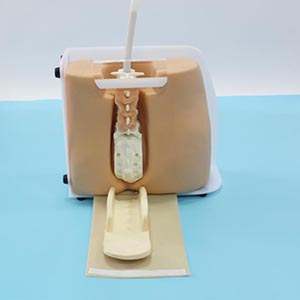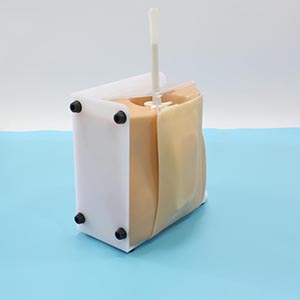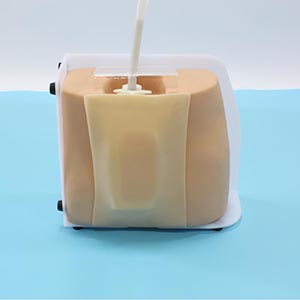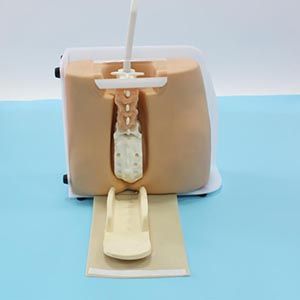Spinal puncture (also known as lumbar puncture) is a high-precision technique that is widely used in clinical diagnosis and treatment, especially in cerebrospinal fluid collection, anesthesia procedures and some therapeutic procedures. For physicians, mastering this skill is key to improving clinical quality and patient safety. However, spinal tap procedures can be difficult, especially for novice doctors. With the continuous development of medical education and technology, spinal puncture model, as a simulation training tool, has become an important part of medical training, helping doctors to accurately master puncture techniques. Here is an analysis of how the spinal tap model promotes personal growth, the advantages of the teaching model, and data support.
1. Personal growth and skill development

A spinal tap is a highly technical and precision procedure, especially for beginners. Through the training of the spinal tap model, the doctor can practice repeatedly in a risk-free environment, thereby improving the accuracy and confidence of the operation.
- Precise operation training: Through repeated practice, the doctor is able to familiarize himself with the anatomy of the spine and master the correct Angle, depth, and important details of the puncture process. The use of simulation models allows doctors to continually improve techniques without putting patients at risk.
- Reduce psychological stress: Spinal taps often need to be done in a stressful clinical environment. Through the simulation practice, the doctor can gradually eliminate the tension of the puncture operation, enhance the psychological quality, and thus more freely carry out the actual operation.
2. Advantages of teaching model

Spinal tap models are not only a tool for the personal growth of physicians, but also an integral part of medical education and training.
- Integration of theory and practice: In medical education, spinal tap models can help students combine theoretical knowledge with practical practice. By simulating different anatomical structures and clinical situations, doctors are able to gain hands-on experience during training.
- High simulation: Modern spinal tap models use high simulation technology to simulate real spinal anatomy and provide different clinical scenarios, such as scoliosis, disc herniation, etc., to help students cope with a variety of complex clinical situations.
- Immediate feedback and guidance: Some high-end spinal tap models are equipped with feedback systems that provide real-time feedback during the doctor's procedure to help the doctor correct errors and gradually improve his piercing skills.
3. Data support and effect

Studies and data show that doctors trained using the spinal tap model have significantly improved success rates and operational accuracy in actual clinical procedures.
- Data survey: A study of spinal tap simulation training showed that doctors who received simulation training improved their success rate in actual practice by about 35%. Especially in complex situations (such as those with spinal variations or a high risk of nerve damage), simulation training can be particularly helpful to physicians.
Training effectiveness evaluation: According to data from the medical institution, novice doctors trained using the spinal tap model have reduced their error rate by more than 40% when completing piercings, while improving patient safety.
Sum up
Spinal tap models play a vital role in medical education and clinical skills training. Through repeated simulation exercises, doctors can improve their piercing skills in a risk-free environment, accurately grasp the details of the operation, and especially in the face of complex clinical situations. In addition, data support shows that the use of spinal tap models can not only help doctors improve their technical level, but also effectively reduce the rate of surgical errors and improve patient safety. As technology continues to advance, spinal tap models will become a standard tool in medical training, helping physicians continue to advance in personal growth and clinical practice, and ultimately improve overall medical care.

